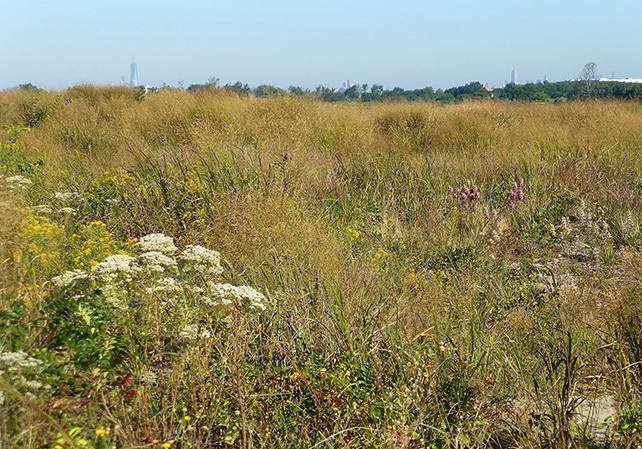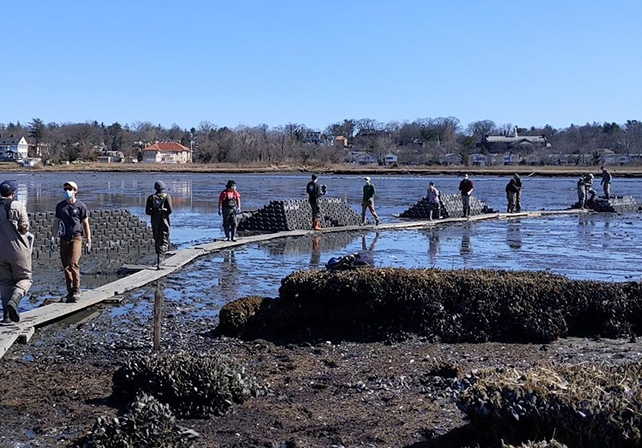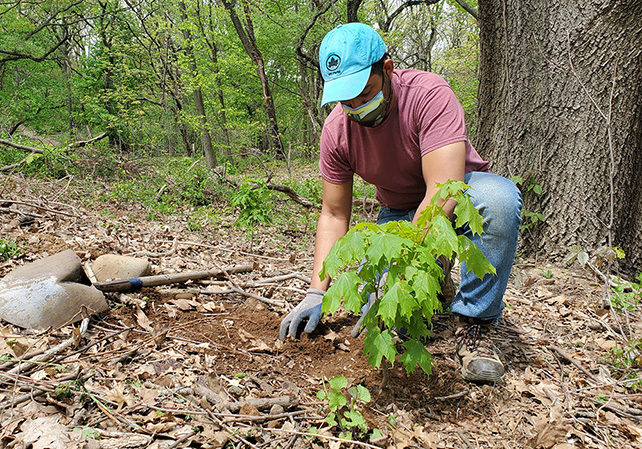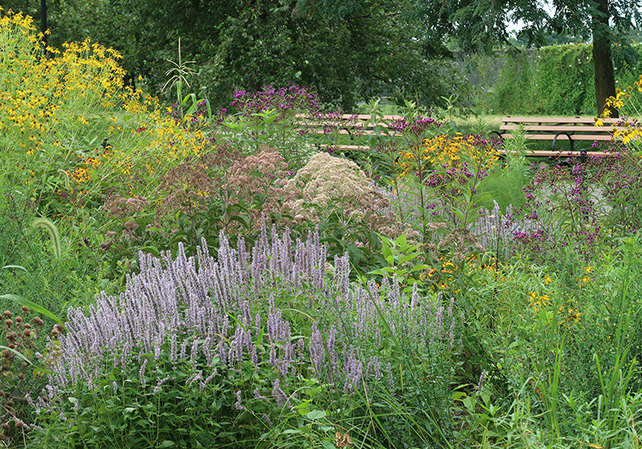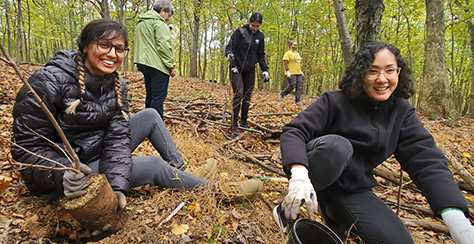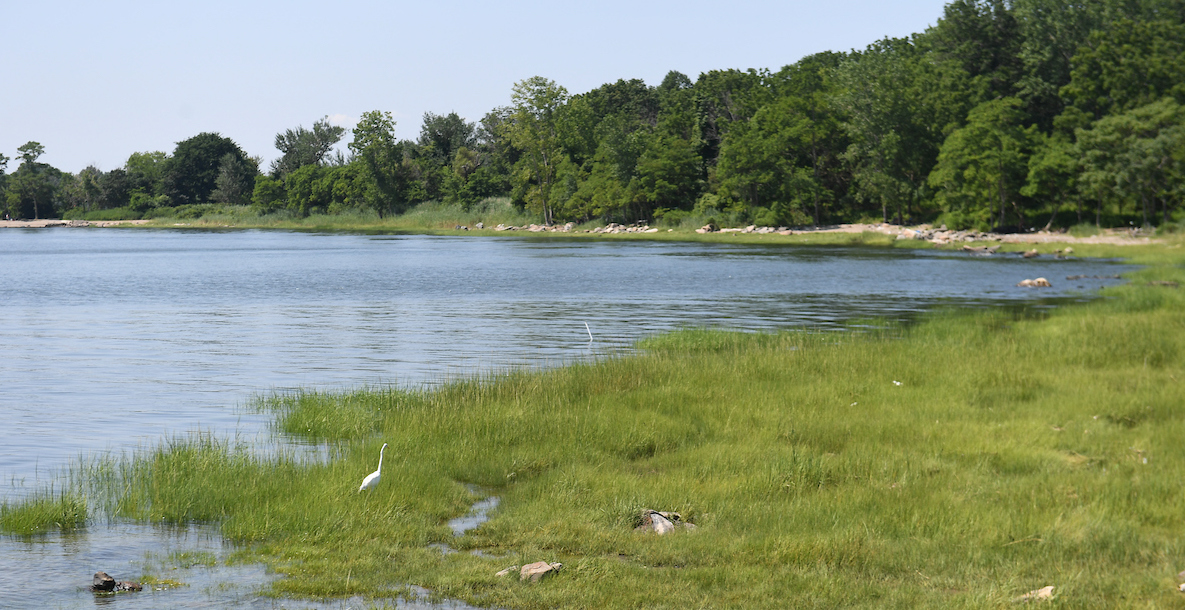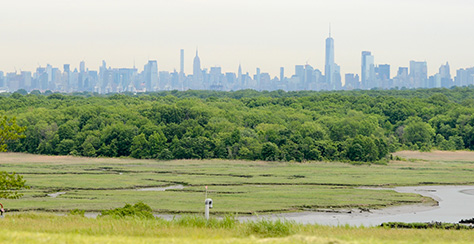How NYC Parks Fights Climate Change: Restoring and Protecting Our Ecosystems and Wildlife Habitat
Nearly 12 percent of New York City’s land area, more than 20,000 acres in total, comprises natural areas, such as forests, wetlands, and grassland. These areas absorb stormwater, clean our air and water, and support our physical and mental wellbeing, and also sustain the biodiversity and overall ecological health of our city by providing vital food sources and habitat for wildlife. New York City is home to 212 species of mammals, birds, reptiles, amphibians, fish, and insects that are endangered, threatened, or of special concern, and depend on our forests, freshwater wetlands, salt marshes, streams, and grasslands.

Unfortunately, many of these areas have been destroyed or harmed by historical or contemporary development. Since Europeans arrived, NYC has lost 85 percent of its salt marsh area and stream miles and 99 percent of its freshwater wetland habitat. Forests were cleared to make way for development, wetlands were buried under landfills, and streams were treated as sewers or buried underground. Even with modern conservation, protection, and restoration practices, these natural environments face ongoing risks from development and climate change.
The increased frequency and intensity of storm events can harm forests and streams; high winds knock down trees and increased runoff causes erosion that weakens the soil foundation below tree roots, damages stream beds, and brings pollutants into streams. By the 2050s, New York City will experience sea-level rise by as much as 2.5 feet. Many plants in wetlands, including plants that filter our air and water, are not adapted to being submerged full-time and will effectively drown as rising water limits their access to oxygen. In natural settings, salt marshes can respond to sea-level rise by migrating inland. But in urban areas, this is often not possible because of buildings, roads, or other built infrastructure. Sea-level rise projections suggest that we are losing six acres of salt marsh per year, and a third of marshes in New York City parks (around 275 acres) are at risk of drowning.
What We’re Doing
NYC Parks is committed to creating a resilient and sustainable park system, with thriving ecosystems that support New Yorkers of all kinds, human and wildlife. We take a variety of actions in all five boroughs to preserve, restore, and enhance natural areas.
Preserving Natural Areas
As of 2022, through our Forever Wild program, we have protected and preserved more than 12,300 acres of ecologically valuable lands in the five boroughs. These forests, wetlands, and meadows are important reservoirs of biodiversity and provide vital habitat to many plants and animals, including rare, threatened, and endangered species. Parks and our partners, such as the Natural Areas Conservancy, care for and protect these areas. We remove harmful plant species, plant trees, and create and maintain effective trail networks that allow visitors to enjoy natural areas without disturbing the local ecosystems.
Explore White Island, a preserved grassland rarely open to the public, offshore at Marine Park in Brooklyn.
Restoring and Enhancing Shorelines
Where coastal wetlands have been damaged by development and erosion, Parks is working to restore these areas and make them more resilient to the effects of wave action and sea level rise. With our partners, the Natural Areas Conservancy, we have created a 30-year roadmap for the preservation, restoration, and management of all wetlands and streams in NYC. This plan includes a variety of actions and projects to restore and enhance thousands of acres of wetlands in the city. For example, one action we take is to create living shorelines that use concrete blocks to absorb the energy of incoming waves and protect the marsh area from further erosion. These blocks have the added benefit of providing surface area for bivalves like mussels and oysters to attach and grow, which helps to filter and remove pollutants from the water.
Living shoreline at the salt marsh at the northern end of Alley Pond Park in Queens.
Planting Trees
NYC Parks works year-round to plant trees throughout the city. Trees are put into the ground during the planting seasons of March through May and October through December. Parks staff spend the months in between strategically planning planting locations and optimal tree species. We also adapted our planting palette for coastal areas to select tree and plant species that have what it takes to survive in the coastal environment, like tolerance for saltwater, high seasonal water flow, high winds, and projected sea level rise.
Together with volunteers, our experts strategically plant trees in our parks in the spring and fall.
Growing Native Plants
To continue to support providing food and homes for wildlife, especially for pollinators, our horticulture team prioritizes growing native plants in our gardens and other landscaped park areas. In 2021, we launched the first of our Pollinator Place Gardens, which are specially designed to provide food and habitat for pollinators year-round who are suffering due to the effects of climate change, development, resource depletion, and competition for habitat with other species. These garden spaces are also important refueling stops for migrating pollinators, like the endangered monarch butterfly, and include native plants these insects love, like milkweed and goldenrod.
This Pollinator Place Garden at Calvert Vaux Park in Brooklyn welcomes summer-loving pollinators with colorful native flowering plants.
Explore More Ways NYC Parks Fights Climate Change
In addition to restoring and protecting vital ecosystems and wildlife habitat, we're also tackling other effects of climate change that impact our air quality, heat index, waterways, and flood-prone communities. Learn more:

Cooling Our City
We're expanding greenspaces on neighborhood blocks, in parks, and on rooftops, in addition to adding water features in our parks, to help lower the city's heat index and provide respite during the warmest months.

Cleaning Our Water and Protecting Coastal Communities
Explore how we're keeping our waterways clean to provide our city with cleaner water, beaches, and habitat for aquatic wildlife, and examine how we're making our shorelines more resilient in the face of sea leave rise.
Learn more about how we're protecting
waterways, shorelines, and flood-prone communities
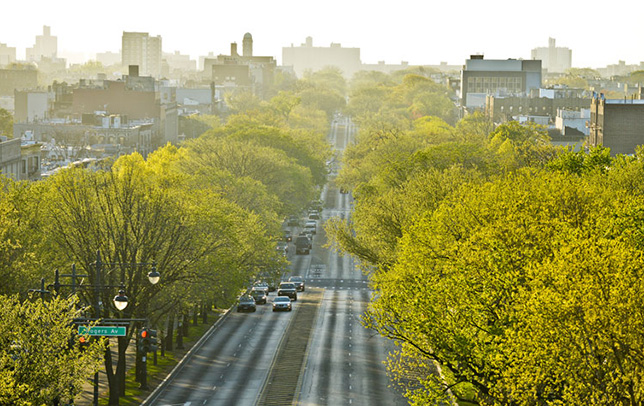
Cleaning Our Air
Our trees and other plantings play a vital role in removing harmful pollutants. Delve into the science behind our plantings that improve air quality and discover how we're shifting to renewable energy to help keep the air clean.
Features
Steps You Can Take to Fight Climate Change
Learn how you can volunteer with us to restore natural areas and discover how you can join the fight on your own by caring for your street tree, growing pollinator-friendly gardens, and reducing your carbon footprint!
Ecosystems in New York City Parks
Take a closer look at our forests, wetlands, and meadows, how we care for them, and how they benefit the health of the city.
Sustainability at Parks
Explore more ways we’re making our city more resilient and how we’re incorporating climate action into how we care for and build parks.
Last updated: September 22, 2022

